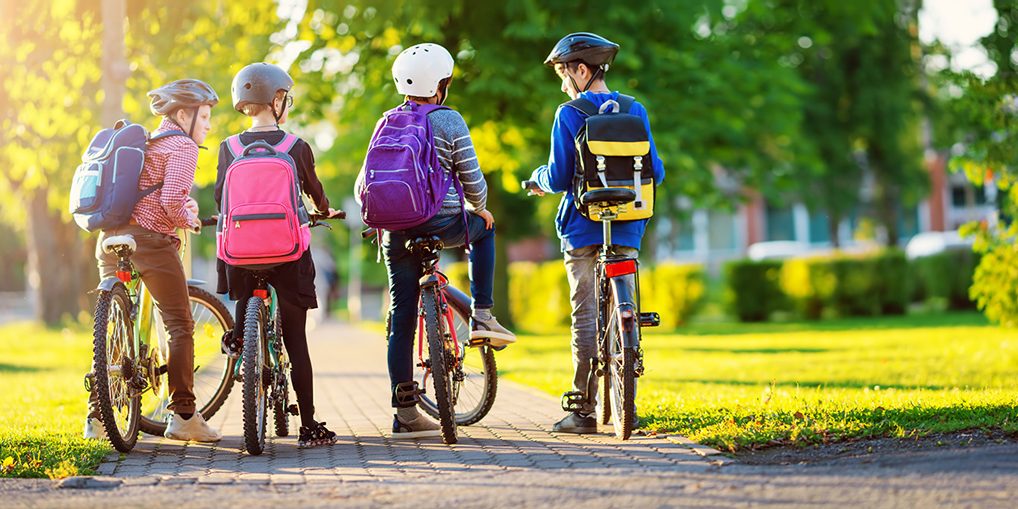- Home
- Insights
- Independence
- Is it possible to give your kids independence while maintaining your sanity?
Is it possible to give your kids independence while maintaining your sanity?
0%

At Pixbee HQ we’ve been debating the age at independence- the age of which, we as parents or guardians, start to loosen the parental strings and let go of our children (a little). After all, Pixbee has a clever little feature that allows parents to set geofence boundaries and locate their children. But what age is the right age to use features like this, letting your kids step out on their own without having to worry about them all day.
Even when served by a reluctant parent or guardian, independence is a broad brush, and is influenced by a parent’s life experience and perception of risk. If you ever want to test where you sit on this divide, ask yourself (and another parent) what age is the best age to let their oldest kid go out and ride their bikes with their friends.
10? 7? 5? 23? Never?
Some may be horrified at the thought of their ten-year-old riding bikes around their inner-city suburb, navigating busy roads, trams, and trains. And their next-door neighbour only too happy to let their kids track around the same neighbourhood. And the rules seem to differ when you head out into our regional areas.
 However, risk is risk.
However, risk is risk.
We know fostering independence is essential, but so is keeping them safe. So, what is the happy medium and how do we balance both?
Dr Nicole Carville, a Child Psychologist based in Victoria, says parents and caregivers can start increasing independence in their children by slowly introducing different challenges while giving them space to experiment and figure things out independently. She says there is no single strategy that works from one family to the next.
“Fostering independence skills across childhood is best looked at as an incremental and gradual process,” she says. “The foundational skills for developing independence can start from an early age, within reasonable limits and the child’s capacity.” Dr Carville says risk is a part of life and should not be avoided completely. “Try providing your child with “dignity of risk” means allowing them to have a go themselves and potentially get it wrong and to learn from that,” she explains. This way, parents can regroup and assess what is working and what isn’t and navigate from there.
“Of course, I don’t recommend throwing them in the deep end of a situation that is outside their ability to safely manage physically, cognitively or emotionally. But we can act much like a bumper rail at a bowling alley, giving our children the opportunity to operate safely within their lane/abilities, and being firm and safe support when they start to move outside of or beyond their abilities.”
Dr Carville suggests an essential first step as a parent is recognising that we can allow our children to do things themselves while we stand behind them and observe and that it is ok. “This would be supporting your children where necessary, rather than intervening and providing help.” “This allows the time and space to work out a solution, rather than stand beside them and direct them.”
 The reasoning behind this that the child understands they are still safe and still getting their needs met. Research shows that children need to develop a healthy sense of independence and resilience to thrive in the wide world. The idea of wrapping them up in cotton wool may sound comforting; however, it ignores the fact that parents may be hampering their child’s development and causing harm in other ways.
The reasoning behind this that the child understands they are still safe and still getting their needs met. Research shows that children need to develop a healthy sense of independence and resilience to thrive in the wide world. The idea of wrapping them up in cotton wool may sound comforting; however, it ignores the fact that parents may be hampering their child’s development and causing harm in other ways.
One way to start increasing your children’s independence is to keep updating the family rules as a group, so everyone is aware of the parameters. Also, keep in mind, building resilience is vital for children’s mental health. We know that children and adults with better resilience muscles manage stress more effectively when they are older. So the conclusion we’ve come to at Pixbee HQ is there isn’t one hard and fast rule to positively build independence in kids.
However, it does appear to be a delicate balance that combines what’s best for you and your child. Having an open, ongoing conversation, seeking professional advice if you’re uncertain, and never being afraid of changing tact if something doesn’t feel right, is a healthy start.
Pixbee HQ.


